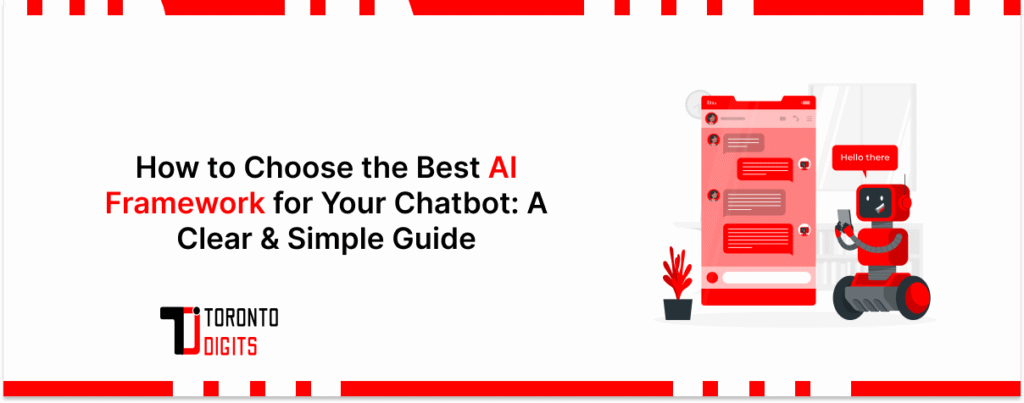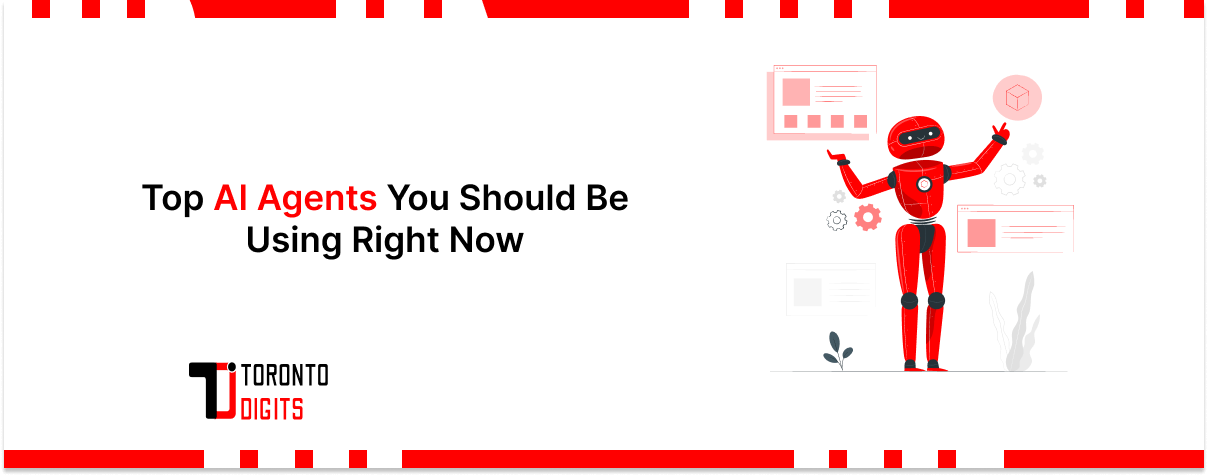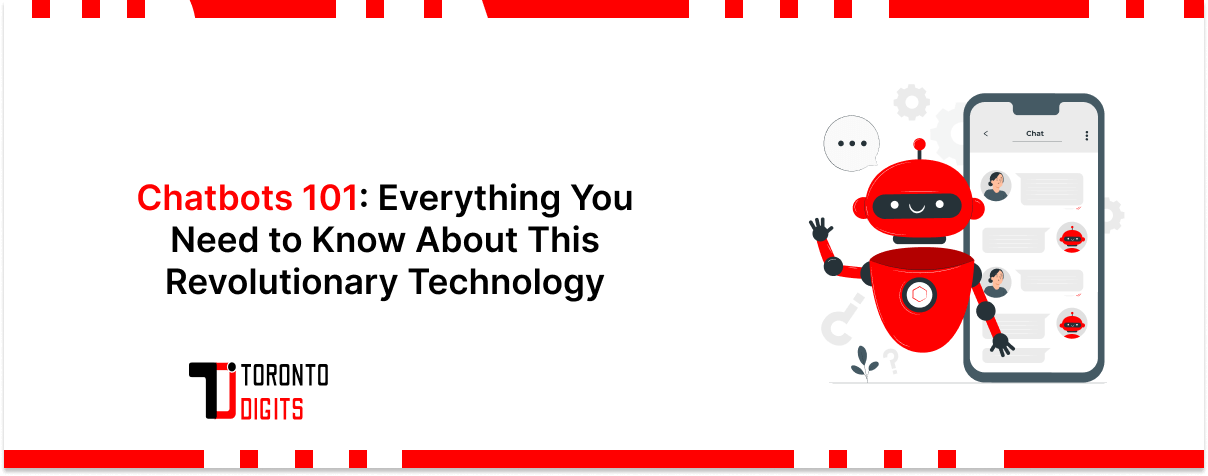Quick Take
Picking the right AI framework can make or break your chatbot’s success. In this guide, we break down the top AI frameworks, highlight their key features, and explain what to look for, so you can confidently choose the one that fits your chatbot’s goals.
Introduction
With so many AI frameworks out there, choosing the right one for your chatbot can feel like a challenge. Each option brings its own strengths—some excel at natural language processing (NLP), while others shine with easy third-party integrations. Whether you’re a chatbot development company or just starting out on your own, the framework you choose will directly impact your bot’s performance and growth potential. In this article, we’ll walk you through the key things to look for and compare the top AI frameworks to help you find the perfect fit for your project.
What is an AI Framework for Chatbots?
An AI framework for chatbots is like a toolbox that helps you build smart, conversational bots. It includes everything you need—tools, libraries, and best practices—to create, train, and launch a chatbot that can understand language, hold conversations, and connect with different platforms like websites, apps, or social media.
Which AI Techniques are Used in Chatbots?
Chatbots rely on Natural Language Processing (NLP) to understand and respond like a human. Here are some of the main techniques they use:
- Intent Recognition – Figures out what the user wants to do.
- Entity Extraction – Pulls out important details like names, dates, or locations from the message.
- Context Management – Keeps track of the conversation flow so the chatbot can respond naturally and stay on topic.
How to Choose the Best AI Framework for Your Chatbot Project
Picking the right AI framework can make a big difference in how smoothly your chatbot runs and how well it scales. With so many options out there, it’s important to think through what your project really needs. Here’s a simplified step-by-step guide to help you choose wisely:
1. Know What Your Project Needs
Start by defining your goals. Ask yourself:
- Are you focusing on deep learning, machine learning, or natural language processing (NLP)?
- Do you need your chatbot to scale fast or run on powerful machines?
- Should it work in real time, or can it be trained offline?
2. Choose a Language-Friendly Framework
Match the framework to your preferred programming language:
- Python developers? Go with TensorFlow or PyTorch.
- .NET apps? Try ML.NET.
- Working in C++ and vision tasks? Consider OpenCV.
3. Think About Performance & Scalability
Your chatbot may grow with time. Choose a framework that can grow with it:
- TensorFlow handles large-scale models with ease.
- PyTorch is super flexible—great for building and testing quickly.
- JAX is a go-to for high-speed performance.
4. Look for a Strong Community & Solid Docs
The more support you have, the easier it’ll be to troubleshoot and learn:
- TensorFlow and PyTorch have huge communities and tons of tutorials.
- Scikit-learn is easy to learn for traditional ML models.
5. Check Hardware & Cloud Compatibility
Make sure the framework works well with your hardware and cloud setup:
- Using NVIDIA GPUs? Look for CUDA support in TensorFlow, PyTorch, or JAX.
- Going cloud-first? Explore integrations with AWS SageMaker, Google Vertex AI, or Azure AI.
6. Ease of Deployment Matters
Where and how you plan to run your chatbot matters:
- Running on devices (Edge AI)? Try TensorFlow Lite or OpenVINO.
- Going cloud-based? Use TensorFlow, ONNX, or PyTorch.
7. Don’t Forget About Licensing & Costs
Some frameworks are free and open-source, while others might have restrictions. Always consider long-term costs, especially for enterprise-grade solutions.
There’s no one-size-fits-all answer. Focus on what suits your project’s size, tech stack, and future growth. The right framework will make building, scaling, and maintaining your chatbot much easier.
Key Things to Look for When Choosing an AI Framework
The AI framework you pick will shape how fast you develop, how smoothly things run, and how well your chatbot performs. From speed and accuracy to deployment and support, here are the most important things to keep in mind:
Open-Source vs. Paid Platforms
- Open-source tools like Rasa give you more freedom and control.
- Proprietary platforms like IBM Watson Assistant offer built-in enterprise features and strong customer support.
Natural Language Understanding (NLU)
Your chatbot needs to “get” what users are saying. A solid framework should offer powerful NLU features that accurately detect meaning and intent.
Multilingual Capabilities
If your chatbot will talk to users in different languages, make sure the framework supports multilingual conversations out of the box.
Deployment Flexibility
Think about where you want to host your chatbot:
- On-premises gives you more data control.
- Cloud hosting can boost speed and simplify scaling.
Community & Support
A large, active developer community and good official support make problem-solving faster and learning easier, especially if you’re new to chatbot development.
In Short: Choose a framework that matches your project’s needs—whether it’s flexibility, multilingual support, or deployment style. The right choice will save time, reduce headaches, and set your chatbot up for success.
Top AI Frameworks for Chatbots – A Simple Comparison
Here’s a quick and easy-to-understand breakdown of some of the most popular AI frameworks you can use to build chatbots. Each has its own strengths and limitations—so pick the one that fits your goals best!
Dialogflow (by Google)
- Type: Proprietary
- NLP Focus: Strong
- What’s Great: Super beginner-friendly, excellent natural language processing, and works smoothly with Google tools.
- Watch Out: Customization is limited, and it’s best suited for Google-based ecosystems.
Rasa
- Type: Open-source
- NLP Focus: Advanced
- What’s Great: Fully customizable, ideal for complex use cases, backed by a strong developer community.
- Watch Out: Steeper learning curve—requires more technical know-how and setup.
Microsoft Bot Framework
- Type: Proprietary
- NLP Focus: Varies
- What’s Great: Packed with powerful features for enterprise use, works well with Azure, and supports multiple languages.
- Watch Out: Can feel too complex for smaller or simple projects, especially if you’re not using Azure.
Wit.ai (by Facebook)
- Type: Proprietary
- NLP Focus: Basic
- What’s Great: Easy to use, supports both text and voice interactions, and integrates well with Facebook products.
- Watch Out: Customization is limited, and its future development is somewhat uncertain.
Bottom Line: Each framework has something unique to offer. If you’re just starting out, Dialogflow or Wit.ai may be a smoother entry. For full control and flexibility, Rasa is a solid choice. For enterprise-level needs, Microsoft’s framework is hard to beat.
Real-World Success Stories: How Top Brands Use AI Frameworks for Chatbots
Want to see how AI frameworks work in action? Here are a few real-life examples of well-known brands using chatbot technology to level up their customer experience:
Sephora + Dialogflow
Sephora, the beauty giant, uses Dialogflow to power its customer service chatbot. The bot helps users find the right products, book appointments, and get personalized recommendations—all thanks to Dialogflow’s strong NLP engine. The result? Happier customers and more sales.
Domino’s Pizza + Rasa
Domino’s took a flexible approach by choosing Rasa for its virtual assistant. Customers can easily place orders, track deliveries, and receive custom offers. With Rasa’s advanced machine learning and dialogue management, Domino’s delivers a smooth and engaging ordering experience.
H&M + Microsoft Bot Framework
Fashion retailer H&M built a chatbot using the Microsoft Bot Framework to help customers with product questions, size guides, and style tips. Thanks to seamless Azure integration, H&M can tap into customer data and analytics to continuously improve the chatbot’s performance.
Bottom Line: These brands show how powerful the right AI framework can be. Whether it’s personalized beauty tips, fast food orders, or fashion advice, AI chatbots are making customer experiences smarter, faster, and more convenient.
Future Trends and Innovations in AI Frameworks for Chatbot Development
AI chatbot technology is advancing fast, and the frameworks behind it are evolving too. Here are some exciting trends shaping the future of chatbot development:
Smarter, More Human Conversations
Thanks to breakthroughs in conversational AI, especially in natural language understanding, text generation, and even voice cloning, chatbots are becoming more lifelike than ever. The result? More natural, helpful, and satisfying user interactions.
AI + Automation = Powerful Bots
By combining chatbots with robotic process automation (RPA), businesses can build bots that don’t just chat—they act. These smart assistants can handle complex tasks on their own, saving time and boosting productivity.
The Rise of Ethical AI
There’s a growing focus on building AI that’s fair, transparent, and accountable. This means AI frameworks are being designed with ethics in mind—to ensure chatbots are responsible, unbiased, and used in ways that build trust.
In Short, the future of AI chatbots is all about smarter conversations, greater automation, and ethical innovation, helping businesses build better bots that truly connect with users.
Final Thoughts
Picking the right AI framework is a key step in building a chatbot that actually works for your goals. By looking at things like how flexible it is, how well it integrates with your tools, how easily it can scale, and what kind of support it offers, you can make a smart choice that fits your needs and budget. Want to make the process even smoother? Teaming up with an experienced AI Chatbot Development Company can give you expert support from start to finish, saving you time and helping you build a chatbot that truly delivers.
FAQs
1. What’s the difference between open-source and proprietary AI frameworks?
Answer: Open-source frameworks give you full control—you can tweak the code to match your exact needs. Proprietary ones usually come with built-in support and advanced features, but you may have to pay licensing fees.
2. Why does multilingual support matter in a chatbot?
Answer: If your chatbot talks to users in different languages, multilingual support is a must. It helps you reach a wider audience and gives every user a better, more personalized experience.
3. Can AI frameworks work with voice inputs?
Answer: Absolutely! Many modern AI frameworks support voice commands, so you can build chatbots that understand and respond to spoken language.
4. What’s the role of Natural Language Processing (NLP) in chatbots?
Answer: NLP is the magic behind how chatbots understand and respond to human language. It helps make conversations smooth, relevant, and easy to follow.
5. Can chatbots connect with smart (IoT) devices?
Answer: Yes! Chatbots can talk to IoT devices using APIs. That means users can control things like lights, thermostats, or appliances with simple messages or voice commands.
6. What costs should I consider when choosing an AI framework?
Answer: Think about licensing fees (if it’s not open-source), development time, and long-term costs like scaling and maintenance.
7. How do I keep my chatbot useful and up to date?
Answer: Keep improving it! Use customer feedback, track how it’s performing, and stay current with the latest AI trends and tools.



